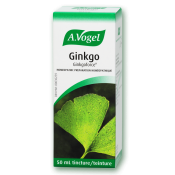What is deep vein thrombosis?
This condition is characterized by the formation of a blood clot in a deep vein, typically those of the lower limbs.
What are the causes?
There are numerous causes, too many to list in an article like this. However, any agent or condition that prevents blood from circulating or coagulating normally can cause this concern. The main thing to focus on is that the condition is preventable and treatable and can be better managed when it is caught earlier than later.
What are the signs and symptoms?
- Sensation of cramping in the afflicted leg
- Pain in the foot or ankle
- The lower limb will begin to swell
- The tissue around the affected area will begin to change colours, trending towards red or blue
- The tissue around the affected area will feel warm to the touch relative to the surrounding skin
What are the complications?
The risk of a thrombus is that it becomes mobile, a transition to something known as embolus. This embolus travels through the blood vessels and can become lodged in a blood vessel which shuts down blood flow through potentially vital parts of the body. The most concerning risk is that this embolus becomes lodged in one of the arteries of the lungs and could potentially become fatal if left untreated.
What factors increase your risk of developing DVT?
- Immobility. Research conducted by the World Health Organization, known as the WRIGHT study (WHO Research Into Global Hazards of Travel) demonstrated that flights of more than 4h increase the risk of venous thromboembolism by approximately two to three times.
- Obesity. One of the largest datasets ever created, the Nurses' Health Study demonstrated that those falling into an obese category were almost six times more at risk of an unprovoked pulmonary embolism. Obesity may also be associated with increased sedentary behaviours, which impair circulation and allow clots to form more easily.
- Cancer. The relationship between deep vein thrombosis and cancer dates back as early as 1865 and has become the second-leading cause of death in those afflicted by cancer. This category of patients are often in a hypercoagulable state, which means their body is prone to blood clotting, otherwise known as coagulation. One study demonstrates that the risk of arterial thrombosis was 2.2% in those without cancer, and 4.7%, almost double, in those battling the disease.
- Pregnancy. As seen with cancer, pregnancy places the female body in a hypercoagulable state. When women become pregnant, the body increases the blood volume of the body to accommodate the developing fetus through something known as hemodilution. This dilution of the blood requires more platelets and clotting factors to be produced in order to protect against excessive bleeding. Due to these changes, pregnancy increases the risk of developing a deep vein thrombosis 5-fold and pulmonary embolisms have become the leading cause of death in the US and other developed nations.
- Smoking. There seems to be a potential dose-related risk of venous thromboembolism associated with smoking. Many different factors play into how smoking increases the risk including different clotting factors and repeated inflammation due to the chemicals in cigarettes.
When should you consider seeing your primary care provider?
If any of the signs listed above appear suddenly, and you can't think of any other explanation, it is wise to attend a walk-in clinic to have your primary care provider take a look. They may send you for further investigations at a nearby hospital where tests such as ultrasounds or D-dimer can help determine the presence of a clot.
You mentioned the condition was preventable. What are some changes I can implement in my daily life?
- Get moving! We now understand the risk posed by an increasing body mass index and a sedentary lifestyle. Canadian Guidelines suggest 150 minutes of moderate to vigorous exercise per week to optimize health in adults. While this number may sound daunting, it can be broken up into shorter bouts of exercise lasting 10 minutes or more.
- Certain medications exist, such as streptokinase, a protein that breaks down clots and can be given via injection in the case of a heart attack, thromboembolism, or pulmonary embolism. In an interesting lab study, researchers compared streptokinase and an extract of the leaves of A.Vogel Ginkgo biloba and found them to be comparable in their ability to break down clots. There is much more research that needs to be done, but this early study demonstrates how products such as Ginkgo could be used as a complement therapy to prevent deep vein thrombosis from occurring. It's important to open a discussion with your primary care provider if you're already on blood-thinning medications.
- Coat your vessels in gold and add some turmeric to your life. In certain literature, up to 8 grams per day have been shown to be safe in humans without adverse side effects. The compound, curcumin, has been shown to inhibit the aggregation of platelets including reducing the risk of thromboembolism in a mice study. Finally, a human study demonstrated the role curcumin's antioxidant impacts play in decreasing agents of the clotting cascade.
References:
https://www.ema.europa.eu/en/documents/herbal-report/draft-assessment-report-ginkgo-biloba-l-folium_en.pdf
https://www.ncbi.nlm.nih.gov/pmc/articles/PMC2716226/
https://www.ncbi.nlm.nih.gov/pmc/articles/PMC3775725/
https://www.ncbi.nlm.nih.gov/pmc/articles/PMC4520798/
https://www.ncbi.nlm.nih.gov/pmc/articles/PMC5778511/
https://www.ncbi.nlm.nih.gov/pmc/articles/PMC6209883/
https://www.ncbi.nlm.nih.gov/pubmed/28818202
https://www.ncbi.nlm.nih.gov/pubmed/29052850
https://www.who.int/ith/mode_of_travel/DVT/en/





